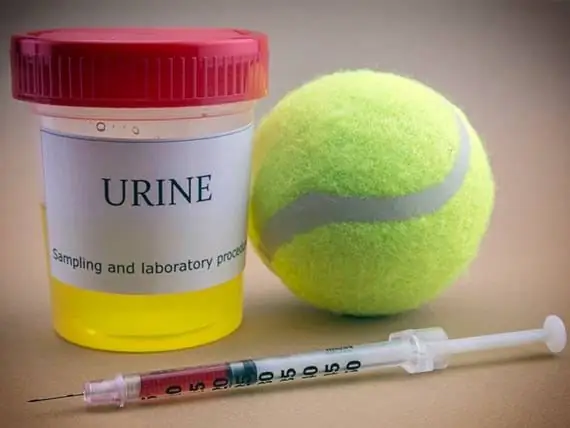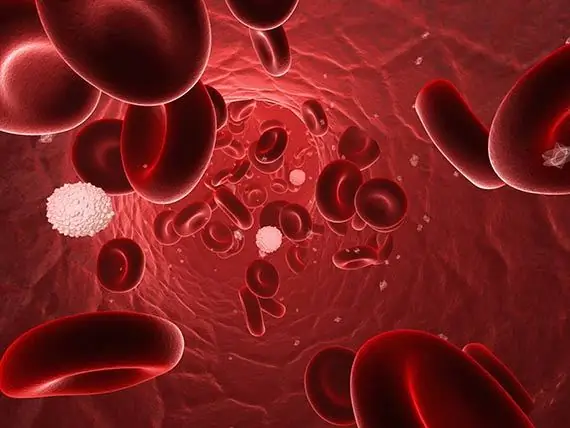
- Autor Daisy Haig [email protected].
- Public 2023-12-17 03:12.
- Última modificação 2025-06-01 06:47.
Então, para que serve esse embaraçoso teste de caca, afinal?
É estressante o suficiente ter o traseiro do seu animal de estimação violado por uma haste de plástico, certo? Então, qual é o ponto?
Você diz: se o objetivo é tornar meu animal de estimação mais saudável e livre de parasitas, então vou confiar em seu julgamento, mas devo dizer que exames de fezes são um tipo de punição cruel e incomum. Eu não recebo esse tipo de humilhação até ser homem e ter quarenta anos, certo? E as fezes não ajudam muito, certo?
Eu digo: para começar, você não precisa que seu animal de estimação sucumba à vara covarde. Uma amostra fresca geralmente é obtida facilmente na manhã (ou tarde) antes de sua visita anual ou sempre que seu animal de estimação apresentar sintomas gastrointestinais. Não é tão difícil, realmente. E se o momento não for exatamente correto (as fezes não devem ter mais de uma hora para melhores resultados), seu hospital veterinário certamente não lhe negará o direito de trazer uma amostra super fresca de acordo com sua conveniência. Promessa.
E sim, exames fecais, embora relativamente baratos e rotineiros, são indispensáveis. Mas, como esta postagem irá demonstrar, também é verdade que nem todos os testes fecais detectarão uma infecção parasitária em seus animais de estimação. É por isso que exames fecais anuais e / ou seriados podem ser necessários.
Agora, para o objetivo principal do teste:
Os veterinários estão sempre à procura de parasitas que podem entrar no trato gastrointestinal de seus animais de estimação. Claro, nós, humanos, também podemos pegar parasitas, mas nosso estilo de vida moderno tende a ser menos propício à infecção por parasitas. (Quando foi a última vez que você foi fungando no quintal, com os lábios no chão, só para poder inalar um ou dois cocôs de felino?)
Sim, os animais de estimação pegam muitos parasitas. Aqui está uma amostra dos parasitas gastrointestinais mais comuns que vejo aqui [no paraíso do parasita que é semitropical do Sul da Flórida]:
Lombrigas em cães e gatos.
Ancilostomídeos em animais de estimação
Tricurídeos em animais de estimação
Giardia em animais de estimação

Vermes hepáticos em animais de estimação
Vermes hepáticos em animais de estimação
coccidia in pets
i’ll not go into the gory details on each but you can click on the links and check out the info for a better understanding of how these parasites can potentially affect your pets and even your human family.
sure, pet-popular parasites don’t often infect humans in the so-called, “developed” nations all of you reading this likely live in, but that doesn’t mean it doesn’t happen. roundworms and hookworms are still a factor in humans in the us, as is giardia, which will give you the nastiest case of diarrhea you can imagine short of amoebic dysentery.
since veterinarians are also on the front lines when it comes to public health, consider that fecal exams are not just necessary for healthy pets, they’re essential for healthy humans, too, more so if your family members are very young children, very old adults or otherwise immunocompromised (transplant patients, hiv-positive humans, chemo recipients, etc.).
how do we identify these critters in the fecal exam?
the short answer: with a microscope.
the long answer: we take a tiny sample of your pet’s stool (very fresh is always best). a few grams is enough (think an eighth of a teaspoon if that’s easier). then we put it through one of three processes.
1. the smear: we take about a half gram of stool and smear it onto a microscope slide to search for parasites (and bacteria) directly. many times we’ll see them swimming about. finding evidence of parasites in a simple smear is often indicative of severe infection.
2. the float: this method relies on mixing the stool with a special solution. it filters out the big pieces of stool in a tube or other cylindrical vessel and allows the eggs and other small critters to float up to the top, buoyed by the solution’s specific gravity. a microscope slide’s cover slip is typically used to recover the floaters. some parasites, however, aren’t amenable to flotation. eggs seem to do best through this method.
3. centrifugation: spinning the heck out of stool in a centrifuge when it’s mixed in a sugar solution picks up about 50% more parasite eggs and oocysts than through flotation. therefore, i like this method best for worm eggs, giardia, and coccidia--though i’d never go without a smear. problem is, most hospitals don’t yet use this method. it’s more expensive than others and research demonstrating it’s much greater efficacy is fairly recent.
so now you know the truth: not all fecal exams are created equal. not only does this test rely on careful selection of materials and methods, it also requires a trained eye. in our practice, for example, one of our techs detects parasites about 50% more often than the veterinarians and other techs/assistants. (that’s why we also do floats so that she can check them all at her convenience when she comes back from her day off.)
it’s also true that even a parasite-infected animal will often not come up positive on a fecal test. human error and equipment choice are factors, but so is the parasite itself. sometimes they do not make themselves known in the stool. worms sometimes aren’t shedding their eggs and subclinical (low-grade or smoldering) infections may not reveal much, either.
again, that’s why it’s important to perform this test as often as is reasonable. for all dogs and cats at least three times during the first few months of life. i want to see at least two negative tests in a row, a month apart, before i’ll feel comfortable that my patient is parasite-free.
for adults, once a year is great--that is, unless they show gastrointestinal illnesses. in this case, serial fecal tests make sense--or at least one every time the symptoms recur until a definitive diagnosis is made (whether it’s parasites or something else).
ultimately, fecal tests are a critical component of our veterinary hat of tricks. doing without may seem like the economically wisest thing in the absence of gastrointestinal symptoms, but consider: parasites can wear pets down in ways you might not expect. and it’s never wrong to be too safe in the presence of diseases that may also affect your family. ‘nuff said.
Recomendado:
O Que é Um Teste De Titulação E é Adequado Para O Seu Animal De Estimação?

Para contrariar a crescente preocupação do público e abordar as evidências de que algumas vacinas podem ter um efeito adverso em alguns animais de estimação, um dos procedimentos médicos usados para determinar a necessidade de vacinação é o teste de titulação. Saiba mais aqui
Quão Seguros São Os Produtos Químicos Do Gramado Para Animais De Estimação? - Seu Gramado Perfeito Está Matando Seu Animal De Estimação?

Enquanto os americanos se esforçam para ter um gramado verde perfeito, eles estão usando uma ampla gama de produtos químicos para atingir seus objetivos. Infelizmente, isso tem um efeito prejudicial sobre o meio ambiente e os animais que nele vivem. Como os produtos de gramado e jardim afetam nossos animais de estimação? Consulte Mais informação
A Importância Do Estadiamento Para Animais De Estimação Com Câncer, Parte 3 - Exame De Urina E Fecal Para Animais De Estimação Com Câncer

Parte do processo de estadiamento do câncer para animais de estimação em tratamento consiste em testar todos os diferentes fluidos do corpo. Nesta edição, o Dr. Mahaney explica o processo de teste de urina e fezes. Consulte Mais informação
A Importância Do Estadiamento Para Animais De Estimação Com Câncer, Parte 2 - Teste De Sangue Para Animais De Estimação Com Câncer

O exame de sangue nos diz muito sobre a saúde interna do corpo de nossos animais de estimação, mas não revela uma imagem completa, e é por isso que uma avaliação completa do sangue é um dos testes que os veterinários costumam recomendar ao determinar o estado de um animal de estimação. bem-estar - ou doença
Alimentos Para Animais De Estimação (o Que Você Precisa Saber) Para O Bem Do Seu Animal De Estimação

A seguir está uma série de postagens que ajudarão a educar os donos de animais de estimação sobre a leitura de rótulos e a escolha de alimentos em que podem confiar para seus animais de estimação. É fácil ser enganado por truques de marketing e alegações de rótulos enganosas … animais de estimação não questionam o que comem … então devemos
